Nervous about repotting my 35 year old calamondin
Vladimir (Zone 5b Massachusetts)
6 years ago
last modified: 6 years ago
Featured Answer
Sort by:Oldest
Comments (131)
Vladimir (Zone 5b Massachusetts)
5 years agoRelated Discussions
My less than 1- & 1-year old bulbs - photos and video
Comments (9)There's something wrong with my computer... the video won't load properly. I'm sure it's a glitch on my end, so I'll have Larry take a look at it when he has time. When I moved my desk and set up my computer again, I removed the speakers... I couldn't stand all the dings and other noises, especially from the instant messengers! They drove me nuts! I like to enjoy my coffee and surf time in silence! Kristi, you've reminded me that it's way past time to re-pot some of these bulbs and bulb youngsters I have! A few of them must be choking to death in their tiny pots! And yes... all the discussions we've had on soil really made a difference... I was forced to take a deeper look into the how and why of root growth... healthy root growth... and re-think my approach to mediums. I think I've got a good compromise going with the mix I now use. And my persistence paid off... I finally located all the ingredients I need... locally!...See Moreshow and tell over 10 year old large sansi
Comments (30)Looks like cylindrica... Sadly I may have lost many of my plant pics, the computer had to be restored... Ill see if maybe there's still some hiding in the thousands of plant pics on the camera They are indeed troopers! A close friend has decided these are the very best house plant, it's hard to argue, the only situations that they can't survive are... Wet feet, and it takes a long time for that to get em too. This friend has several in just about the lowest light possible, she killed a few in that spot til I told her to stop watering. They don't really grow, not that we can tell, but light water once a month and this guy looks as good as he did 2 years ago, just exactly as good, no better or bigger, but no problems My friends happy, she doesn't want it to look a bit different!...See Morenervous about seeing it come to fruition
Comments (24)Thanks, everyone, for sharing your similar stories. Baligirl, I agree that it feels somehow "wrong" to be worried about all of these silly details. A friend of mine just returned from a mission trip to Haiti. Her pictures certainly put all of these ultimately meaningless little decisions into perspective. Nontheless, we started down this road, we're in the middle of the project and so we must continue. Here's an update. The cabinets arrived yesterday and are all in place, although the trim and a few tweaks and adjustments need to be completed. They're coming back Thursday to finish because they need to remake a beadboard section that they had measured incorrectly. Yes, the cabinets are darker and redder than I would have selected, but they really are beautiful. They are SUCH an upgrade over our previous cabinets. The drawers don't make an awful creaking sound when you pull them out! The doors and drawers close softly; there's more storage; the wood finish is beautiful; the magic corner (which I think we're going to refer to as "the contraption") looks wonderful. I love how the glass inserts above the hutch area look. I guess you could say I'm feeling more optimistic about this whole thing. Jillsee, how is your install going? Did I see on another post that you're in PA? We are too. My kitchen floor isn't hardwood like yours, but it sounds like our cabinet choices are similar. There is hardwood adjacent to our kitchen--that's what you see in the photo. Our kitchen floor is currently plywood subfloor. I still haven't selected the flooring for the kitchen. I had a whole other thread about that subject. At this point, we're leaning toward Duraceramic Tile or Marmoleum Click. Since we were so close to getting the cabinets I decided to wait and see the samples with the cabinets before making the final choice. Either choice doesn't need to go under the cabinets anyway....See MoreMy three-year-old daughter doesn't talk
Comments (14)Hi Lazygarden: Let's make this clear. I have a B.S. degree in Computer Science, minor in chemistry, graduated in 1986 from Grand Valley State University, MI. I also took Biochemistry, Organic chemistry, Pathophysiology, Child-development, and Abnormal Behavior Psychology. I'm also a Mom of a 12-year old who had speech-problem since she was 3. Lazygarden: What university did you graduate from, and are you a parent of a child with developmental problems? ReganMom, the poster of this thread, specifically asked "Has anyone had a similar situation, and how did you deal with it?" If you look at Amazon reviews on Carlson liquid fish oil, most recommended by M.D. to lower blood cholesterol and triglycerides, you'll see this review by a parent: http://www.amazon.com/Carlson-Finest-Liquid-Omega-3-Lemon/dp/B001LF39RO "our family has been using carlson's fish oil for many months now. i initially purchased it bc my son's speech therapist told me that a couple of her student's parents swore by the stuff. they say it's good for brain development. i was curious to try it out. i ended up giving it to the whole family (a spoonful in juice/milk/smoothie) every morning for health reasons." This is from livestrong.com: http://www.livestrong.com/article/353655-fish-oil-for-a-toddler-with-speech-developmental-delays/ Cognitive Benefits Omega-3 fatty acids are highly concentrated in the brain. They are important for brain function and may be effective for improving thinking skills. According to Special Kids Today, fish oil may improve language skills and eye contact in children with apraxia of speech, which is characterized by difficulty planning and producing the movements needed for speaking. Although there is no substitute for speech therapy, your child's doctor may recommend combining fish oil supplements with therapy. Below is another Mom who posted on CircleofMom, see link below: Michele - posted on 10/20/2012 "Hi we have had good luck with using Omega 3 supplements with our daughter. She was diagnosed at 2 with dyspraxia and SPD. She did not talk until she was 5. She is 15 now and talks your ear off. But we are still working on sentence lenght and clarity as her misarticulations are a result of a habit, We started using the Omega 3 about 3 years ago and we can tell when she is consistantly taking them and when she is not... She speaks clearer and with more words in a sentence. For those who are starting the road of therapy I offer that I would be happy to chat at anytime. Or answer any questions...we have done it all. I also offer that I have a website that tells more about Elizabeth and her journey for those interested. www,michelegianetti.com Here is a link that might be useful: Omega-3 helping with apraxia This post was edited by Strawberryhill on Fri, Oct 10, 14 at 16:55...See Morenikthegreek
5 years agolast modified: 5 years agoVladimir (Zone 5b Massachusetts) thanked nikthegreekmyermike_1micha
5 years agoVladimir (Zone 5b Massachusetts)
5 years agoVladimir (Zone 5b Massachusetts)
5 years agonikthegreek
5 years agolast modified: 5 years agoVladimir (Zone 5b Massachusetts) thanked nikthegreekSusanne Michigan Zone 5/6
5 years agoVladimir (Zone 5b Massachusetts) thanked Susanne Michigan Zone 5/6Alanna Migliacci
5 years agomyermike_1micha
5 years agolast modified: 5 years agodnedd1 zone7 LI NY
5 years agomyermike_1micha
5 years agolast modified: 5 years agosunshine (zone 6a, Ontario,Canada)
5 years agoVladimir (Zone 5b Massachusetts) thanked sunshine (zone 6a, Ontario,Canada)myermike_1micha
5 years agolast modified: 5 years agoVladimir (Zone 5b Massachusetts) thanked myermike_1michaEmily Jenkins
5 years agoEmily Jenkins
5 years agosunshine (zone 6a, Ontario,Canada)
5 years agolast modified: 5 years agotapla (mid-Michigan, USDA z5b-6a)
5 years agolast modified: 5 years agoVladimir (Zone 5b Massachusetts) thanked tapla (mid-Michigan, USDA z5b-6a)tapla (mid-Michigan, USDA z5b-6a)
5 years agolast modified: 5 years agoVladimir (Zone 5b Massachusetts) thanked tapla (mid-Michigan, USDA z5b-6a)Vladimir (Zone 5b Massachusetts)
5 years agoMonyet
5 years agotapla (mid-Michigan, USDA z5b-6a)
5 years agoVladimir (Zone 5b Massachusetts) thanked tapla (mid-Michigan, USDA z5b-6a)tapla (mid-Michigan, USDA z5b-6a)
5 years agoHome
5 years agolast modified: 5 years agotapla (mid-Michigan, USDA z5b-6a)
5 years agoHome
5 years agotapla (mid-Michigan, USDA z5b-6a)
5 years agotropicofcancer (6b SW-PA)
5 years agotapla (mid-Michigan, USDA z5b-6a)
5 years agoMonyet
5 years agotapla (mid-Michigan, USDA z5b-6a)
5 years agoVladimir (Zone 5b Massachusetts)
5 years agoVladimir (Zone 5b Massachusetts)
5 years agomyermike_1micha
5 years agolast modified: 5 years agoVladimir (Zone 5b Massachusetts) thanked myermike_1michaVladimir (Zone 5b Massachusetts)
5 years agosunshine (zone 6a, Ontario,Canada)
5 years agotropicofcancer (6b SW-PA)
5 years agoVladimir (Zone 5b Massachusetts) thanked tropicofcancer (6b SW-PA)jenny_in_se_pa
5 years agolast modified: 5 years agoVladimir (Zone 5b Massachusetts) thanked jenny_in_se_paVladimir (Zone 5b Massachusetts)
5 years agojenny_in_se_pa
5 years agolast modified: 5 years agoVladimir (Zone 5b Massachusetts) thanked jenny_in_se_pa
Related Stories

PETSSo You're Thinking About Getting a Dog
Prepare yourself for the realities of training, cost and the impact that lovable pooch might have on your house
Full Story
DECLUTTERINGClutter vs. Keepers: A Guide to New Year's Purging
Simple questions to get in touch with your clutter comfort level — and figure out what needs to go
Full Story
KITCHEN DESIGNKitchen Layouts: A Vote for the Good Old Galley
Less popular now, the galley kitchen is still a great layout for cooking
Full Story
GARDENING GUIDESThe Truth About Bats: 3 Reasons to Love Them
It’s Halloween — time for spiders, black cats and bats. Here’s why we should appreciate, not fear, the nocturnal winged mammals
Full Story
HOUZZ CALLHow Are You Passing the Time at Home Right Now?
Share your thoughts about how you are coping with stress and staying grateful during this difficult time
Full Story
GARDENING GUIDESTop Cold-Hardy Evergreens for Container Gardens
These tough beauties look good year-round and add consistency to container arrangements
Full Story
DECORATING GUIDESFrom Queasy Colors to Killer Tables: Your Worst Decorating Mistakes
Houzzers spill the beans about buying blunders, painting problems and DIY disasters
Full Story
KITCHEN COUNTERTOPSQuartz vs. Granite: The Battle of the Countertops
Read about the pros and cons — and see great examples — of these popular kitchen countertop materials
Full Story
INSIDE HOUZZHow Much Does a Remodel Cost, and How Long Does It Take?
The 2016 Houzz & Home survey asked 120,000 Houzzers about their renovation projects. Here’s what they said
Full Story
REMODELING GUIDESConsidering a Fixer-Upper? 15 Questions to Ask First
Learn about the hidden costs and treasures of older homes to avoid budget surprises and accidentally tossing valuable features
Full Story


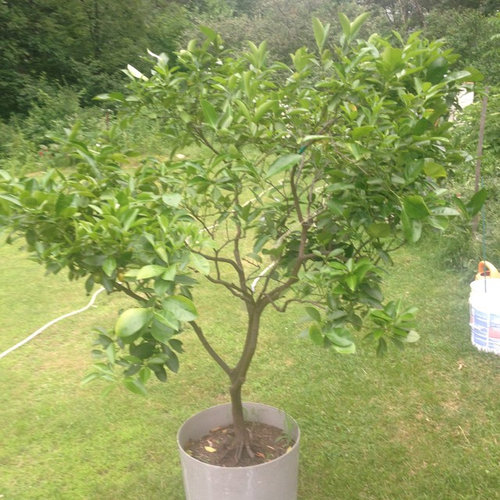

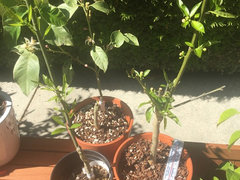
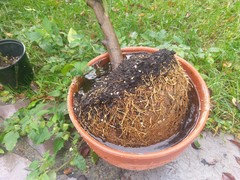
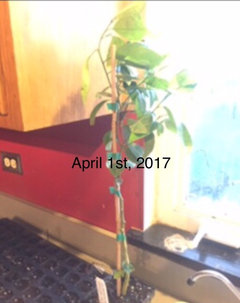


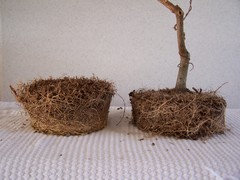

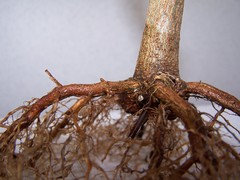
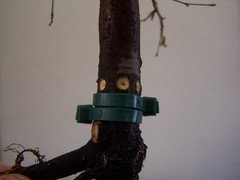

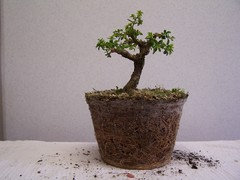

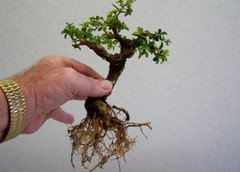

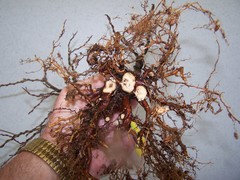

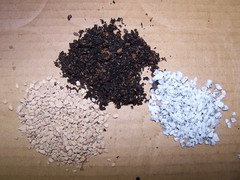
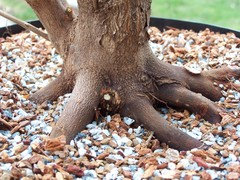

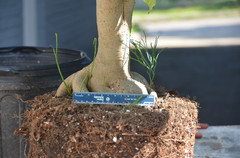


cory (Zone 7a, NJ)